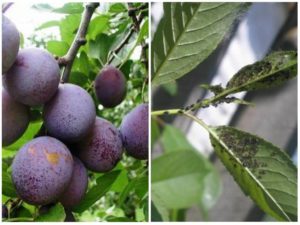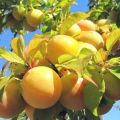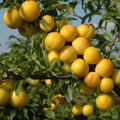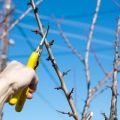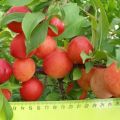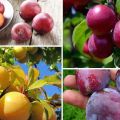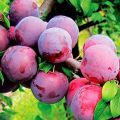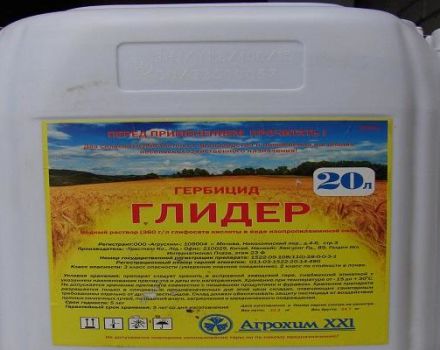Description and characteristics of the plum variety Alenushka, cultivation and care, pollinators
Plum variety Alyonushka is a real find for breeders. It occupies more and more areas in garden plots, as it combines a stable annual yield, excellent taste and ease of maintenance. Most gardeners choose Alenka, considering it a promising variety.
Description of the variety
Plum tree of medium height Alyonushka, 2.5 m high, forms a pyramidal crown of moderate density. Powerful shoots of a red hue. The plant is decorated with sharp long foliage with a light green color. The leaf plate has a pointed top, small denticles are visible along its edge. Lush, large-sized flowers, collected in an inflorescence of 3 pieces, attract attention. At the time of flowering, the shoots are covered with white flowers.
The plum variety Alyonushka is valued for its beautiful fruits that have a round shape. The weight of one fruit is 30-35 g. They have a characteristic red color with a noticeable waxy coating. The skin is very strong, although thin. The pulp is characterized by firmness, juiciness, bright orange tone. Pleases with a pleasant aroma and sweet and sour taste.
The oval-shaped bone hardly leaves the pulp. Fruits hold well on thick short stalks and do not crack when overripe.
Characteristics of the plum Alyonushka
An early ripe variety for table use - the Alyonushka plum, obtained by crossing such varieties of culture as the Chinese woman and the Red ball. Bears fruit in the 3rd year after planting. It delights the abundant flowering that occurs in May, even before the first leaves form. Harvesting can be carried out in early August.

Plum Alyonushka is self-fertile, so if there are no suitable pollinators nearby, then there will be few fruits. The best pollinators: Skoroplodnaya variety, cherry plum, Chinese plum.
Advantages and disadvantages
For a more detailed description of the Alyonushka plum variety, it is important to outline its advantages and disadvantages. The benefits include:
- yield, the average is 88.6 c / ha;
- taste characteristics of fruits, tasting score - 4.8 points;
- frost resistance, the ability to withstand temperature drops to -40 degrees;
- resistance to such diseases of culture as clasterosporia, moniliosis;
- marketability of fruits;
- compact size and decorativeness of the tree.
Disadvantages of the plum variety Alyonushka:
- self-infertility;
- podoprevanie bark at the base of the trunk in rainy weather in autumn, as well as when it is warm and snowy in winter;
- severe damage to foliage and young shoots of aphids.
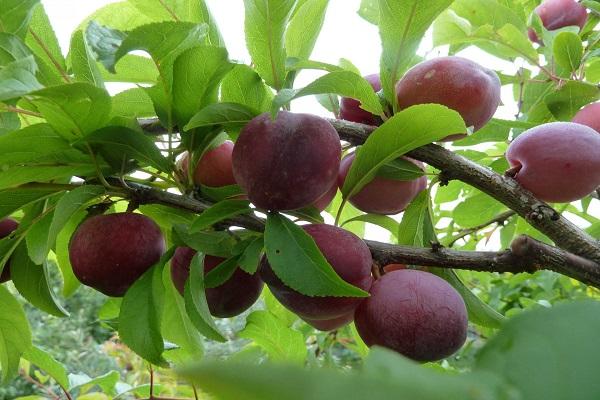
How to grow a crop correctly
Growing plums is a rather laborious process, but if you make some effort and adhere to all general planting norms, you can get a rich harvest of adored fruits. This requires not only determining the time of planting the tree, but also choosing the right place, preparing the planting material and planting.
Landing time and place
The optimal period for planting Alyonushka plums is early spring before bud break. You can plant it in the fall, but do it a month and a half before the frost, then the seedlings will have time to take root, and in the spring they will begin to grow intensively.
Plum Alyonushka will feel good in sunny, open areas. The main requirement when choosing a place for this variety is the absence of lowlands where moisture is concentrated. Therefore, the fruit tree should be placed on a hill in order to avoid debate and decay of the root collar of the seedling in rainy weather and when the snow melts. Good productivity is observed when cultivating seedlings of this variety on neutral fertile soils, characterized by looseness and lightness.
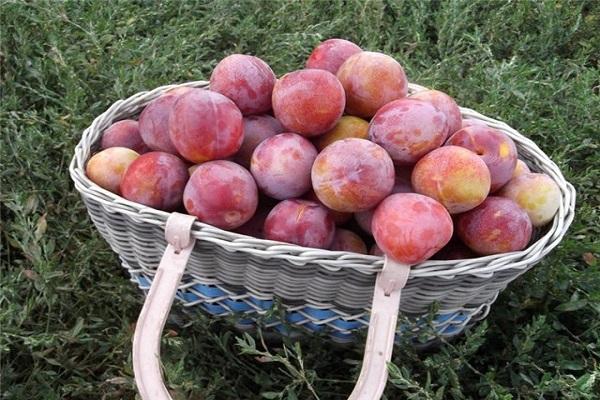
Preparation of planting material
High-quality planting material is a one-year or two-year-old seedling with a strong, healthy root and a fresh appearance without wilting and obvious lesions by diseases and insects. The preparation of a plum sapling variety Alyonushka consists in pruning damaged and long roots.
Planting process
Planting plum saplings of the Alyonushka variety includes the following procedure:
- Make a planting pit measuring 50 x 50 x 60 cm.
- Apply a soil mixture consisting of fertile soil, rotted manure, dolomite flour, ash and minerals. Form a low mound.
- Place Alyonushka plum sapling on a hill, carefully distributing the roots, and sprinkle with soil. In this case, the root collar should be deepened by 2-3 cm.
- Water, then tamp and mulch with a layer of up to 10 cm, using peat, humus or compost.
In order for the plant to take root better in the first month after planting, the plum saplings of the Alyonushka variety need to be watered more often, preventing the soil from drying out.

How to care for a tree
To obtain a good harvest, the plum of the Alenushka variety needs to be surrounded with care and attention, which consists in carrying out such important measures as observing the conditions for soil moisture, timely introduction of nutrients, correct pruning and careful preparation for winter.
Watering and feeding
Water the plant based on weather factors, soil type and plant age. Plum variety Alenushka needs moisture during the growth of ovaries and in the dry season. In October, carry out water charging. After completing the next irrigation, the soil around the tree should be loosened to prevent crust formation.

It is also necessary to provide the plum of the Alyonushka variety from the moment it enters fruiting with nutrients by foliar and root dressings:
- In the spring before budding, applying nitrogen fertilizers. Scatter 1 tbsp of urea over the melting snow. l. 1 m2 trunk circle. After the ground has thawed, pour over the mullein infusion.
- At the budding stage and before flowering, a complex feeding containing potassium and phosphorus is required. Wood ash can be used.
- During the flowering period of the plum, Alyonushka needs to carry out foliar dressing using a boric acid solution, which will stimulate fruit setting.
- After the end of fruiting, in order to improve growth and strengthen the roots, ripening of wood and buds, apply mineral fertilizers, which will serve as superphosphate and any potassium salt that does not contain chlorine.
It is important to remember that proper watering and feeding has three main conditions: regularity, timeliness, norm.
Pruning
The cultivation of the Alyonushka plum includes carrying out such agrotechnical measures as pruning, the purpose of which is to ensure the annual formation of new, strong shoots. Pruning is the removal of dry, overlapping and interfering branches growing towards the trunk or down to the ground. Also cut off the tops - fattening shoots that grow vertically upward. The procedures are carried out in the spring before bud break and in autumn, when the foliage falls.

Preparing for winter
To reduce the risk of bark podoprevaniya, for the winter the trunks of saplings of the plum variety Alyonushka should be tied with spruce branches. Also, in cold weather, the bark of young seedlings is a real treat for rodents. You can protect the trunks and shoots of plums from animals by covering them with burlap, roofing felt or a metal mesh.
Diseases and pests
The plum variety Alyonushka demonstrates immunity to disease, but this sign does not exclude the possibility of infection.
| Name of disease and pest | Description | Control measures |
| Clasterosporium disease | The appearance on the leaf blades of dark, round, pale yellow blotches, which increase and form holes, leading to drying of the leaves | Burning the affected parts of the tree and treating with Bordeaux liquid
|
| Moniliosis | The disease is determined by fallen flowers, dried foliage and peduncles, cracked old shoots | Removal of all infected plant parts and treatment with copper oxychloride |
| Plum sawfly | The larvae of this insect destroy still green fruits by eating the seeds and pulp of the fruit. | Destruction of painful fruits
|
| Aphid | Pale green insects leading to twisting shoots, drying out and falling foliage | Treatment with chemicals that are aimed at the destruction of insects that gnaw foliage |
In the fight against diseases and pests, apply both chemical and biological measures, and well-organized care.
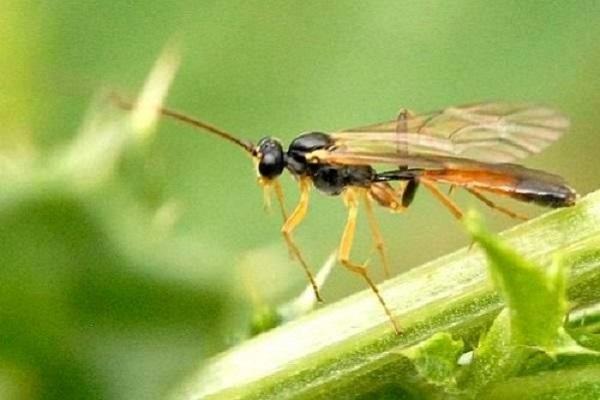
Collection and storage
In the first decade of August, you can harvest plums of the Alenushka variety. It is not recommended to remove the fruits after rain, watering, as well as in the early morning, when there is dew on the plums, but only in dry weather conditions.
The harvested crop cannot be preserved for a long time. Alenka plum is a table variety, it is better to eat it fresh immediately after harvest, and process part of the crop for homemade preparations for the winter. Since the fruits are suitable for jams, compotes.
Plum Alyonushka embodies the best qualities of the famous varieties. Its qualities of taste, characterized by a balance of sugar content and acidity, are considered significant, therefore it is in special demand and immensely popular.

